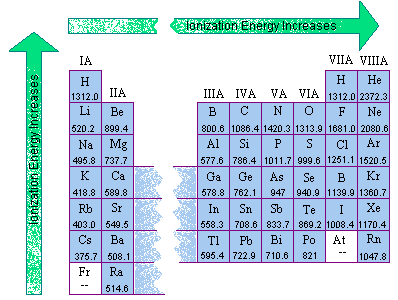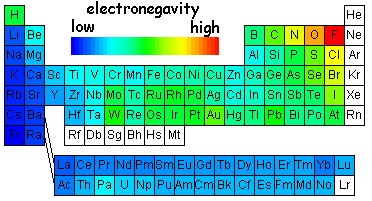There are 7 important periodic trends:
1. Reactivity
2. Ion charge
3. Melting Point
4. Atomic Radius
5. Ionization Energy
6. Electro Negativity
7. Density

Reactivity
Non-metals and metals show different characteristics
The most reactive metal is Francium
The most reactive non-metal Fluorine

Ion Charge
Ion Charges of elements depend on their group (columns).
+1|+2 <-----The Variable Changes----->+3|+/-4|-3|-2|-1|0

Melting Point
The elements in the middle of the periodic table have the highest melting point.
Noble Gases have the lowest melting point.
Starting from the <- and moving to the ->, the melting point increases until it gets to the middle of the table.

Atomic Radius
The radius decreases when moving on the table, up and to the right.
Francium has the largest atomic radius.
Helium has the smallest atomic radius.

Ionization Energy
Ionization Energy is the energy needed to completely remove an electron from an atom.
Ionization Energy increases going up and the right on the table.
All the noble gases have a high ionization energy.
Francium has the lowest Ionization Energy.
Helium has the highest Ionization Energy.
It's the opposite trend from atomic radius.

Electronegativity
Electronegativity refers to how much atoms want to electrons.
It has the same trend as Ionization Energy.

Density
A measure of the quantity of some physical property (usually mass)per unit length, area, or volume (usually volume).
Energy density is a measure of the amount of energy (often inthe form of electromagnetic radiation) per unit volume in a region of space or some material.
No comments:
Post a Comment